Your cart is currently empty!
Zap Zone Defender
The Zap Zone Defender has generated significant online attention through a sophisticated marketing campaign that positions it as a revolutionary solution to mosquito problems. Promoted through social media platforms, video advertisements, and email marketing, this device has captured the attention of consumers frustrated with traditional insect control methods.
Description
Zap Zone Defender: Do NOT Buy Until the Real Customer Truth Exposed?
This comprehensive review exposes the truth behind the viral Zap Zone Defender mosquito killer. We investigate the company, product claims, real user experiences, and how it compares to competitors to determine if this device delivers on its promises or falls short of expectations.
The Buzz Around Zap Zone Defender
The Zap Zone Defender has generated significant online attention through a sophisticated marketing campaign that positions it as a revolutionary solution to mosquito problems. Promoted through social media platforms, video advertisements, and email marketing, this device has captured the attention of consumers frustrated with traditional insect control methods.
The marketing machine behind Zap Zone Defender has masterfully created a sense of urgency and exclusivity around their product. Advertisements showcase dramatic before-and-after scenarios of mosquito-free environments, often featuring satisfied families enjoying outdoor activities without the nuisance of biting insects. These polished promotions promise nothing short of a mosquito apocalypse, claiming the device can eliminate mosquitoes from your vicinity within minutes of activation.
Consumer expectations have been set exceptionally high through aggressive marketing tactics that position the Zap Zone Defender as superior to conventional mosquito control methods. Phrases like “revolutionary technology,” “game-changer,” and “breakthrough innovation” appear frequently in promotional materials, suggesting that this product represents a significant advancement in insect control technology. Many potential buyers report being intrigued by these bold claims, particularly as they search for effective solutions during peak mosquito seasons.
What Is Zap Zone Defender?
The Zap Zone Defender is marketed as a cutting-edge electric mosquito trap designed for versatile use in both indoor and outdoor environments. Approximately the size of a small lantern, this portable device features a sleek, modern design intended to blend seamlessly with home décor or outdoor settings. The unit typically comes in black or dark blue with accent lighting that serves both as an attraction mechanism for insects and as ambient illumination.
At its core, the Zap Zone Defender utilizes an electric grid system that purportedly delivers a lethal high-voltage shock to mosquitoes upon contact. The manufacturer claims this grid is powerful enough to instantly kill mosquitoes while remaining energy-efficient. The device operates by first attracting mosquitoes using a combination of UV light and optional chemical attractants, then eliminating them when they make contact with the electrified surface. A collection tray at the bottom of the unit is designed to capture the eliminated insects for easy disposal.
One of the primary selling points of the Zap Zone Defender is its positioning as an environmentally friendly alternative to chemical sprays and foggers. Marketing materials emphasize that the device uses no toxic chemicals, creates no harmful residue, and poses no risk to the surrounding ecosystem. This eco-friendly angle has particular appeal to families with young children and pets, as the manufacturer assures consumers that the protective outer casing prevents accidental contact with the electrified components, making it safe for use in households with curious little ones and furry companions.
Who Makes Zap Zone Defender?
The corporate identity behind the Zap Zone Defender remains surprisingly elusive despite the product’s widespread marketing presence. Attempts to trace the manufacturer lead to a labyrinth of generic company names and redirects, raising immediate concerns about transparency. The official website typically lists a business name that yields minimal results when researched further, with contact information limited to web forms rather than physical addresses or direct phone lines. This lack of clear corporate identity is unusual for established consumer product manufacturers.
Investigation into the social media presence of Zap Zone Defender reveals additional red flags. While the product maintains active social media accounts, these profiles often redirect to generic Facebook pages with minimal engagement and recently established timelines. The content appears to be predominantly promotional rather than community-focused, lacking the authentic customer interaction typically seen with reputable brands. Many of the testimonials featured appear to use stock images rather than verifiable customer photos, further diminishing credibility.
Perhaps most telling is the product’s absence from major retail channels and established consumer outlets. Unlike legitimate insect control solutions from brands like Thermacell or Black+Decker, Zap Zone Defender seems to exist primarily in the realm of direct-to-consumer online sales, pop-up advertisements, and affiliate marketing websites. This distribution strategy, combined with heavy reliance on paid testimonials and affiliate promotion, suggests a business model focused on quick sales rather than building a reputable product with longevity in the marketplace. The lack of third-party validation from retailers who typically vet their inventory raises significant questions about product quality and manufacturer legitimacy.
Product Claims vs. Science
The Zap Zone Defender makes several bold claims about its effectiveness that warrant scientific scrutiny. At the forefront is the assertion that its electric grid system can eliminate mosquitoes with deadly precision upon contact. While the basic principle of electrocuting insects is scientifically sound and has been used in bug zappers for decades, the effectiveness specifically against mosquitoes requires more nuanced examination. Entomologists note that mosquitoes are not typically as attracted to UV light as many other flying insects, which forms the primary attraction method for most electric zappers. Scientific studies on similar devices show they often kill more beneficial insects than mosquitoes, with mosquitoes comprising less than 5% of insects eliminated by standard electric zappers.
The power efficiency claims also deserve careful consideration. Marketing materials state that the Zap Zone Defender uses significantly less electricity than comparable devices while maintaining superior killing power. However, basic electrical engineering principles suggest a fundamental trade-off between power consumption and electrical output. The high-voltage grid necessary to instantly kill insects requires substantial power, making extremely low consumption claims questionable without revolutionary technology that would likely be patented and prominently featured in marketing materials.
Perhaps most concerning is the comparison to professional-grade equipment. The Zap Zone Defender is frequently positioned as offering “professional results at consumer prices,” yet lacks the specific features entomologists and pest control professionals identify as essential for effective mosquito management. Professional mosquito control typically involves targeted CO2 emission, octenol or other specific mosquito attractants, and carefully calibrated trapping mechanisms – sophisticated elements notably absent or inadequately explained in Zap Zone Defender specifications. Without independent laboratory testing or peer-reviewed studies backing these claims, the scientific validity of the product’s effectiveness remains questionable at best.
User Reviews: Positive Experiences
Despite the skepticism surrounding the Zap Zone Defender, a subset of consumers report genuinely positive experiences with the device. These satisfied users frequently highlight the product’s convenience and user-friendly design as significant advantages. Many appreciate the plug-and-play simplicity that requires minimal setup or technical knowledge, allowing them to deploy the device immediately upon unboxing. The intuitive operation appears to be a genuine strength, with clear instructions and straightforward maintenance procedures that don’t demand specialized tools or complicated processes.
The compact size and portability of the Zap Zone Defender earn consistent praise from outdoor enthusiasts and travelers. Campers particularly value its lightweight design that allows for easy packing and deployment at various campsites. Several reviewers mention successfully using the device during camping trips where it reportedly provided a mosquito-free zone around picnic tables and tents. The device’s ability to operate via batteries or USB power sources adds to this versatility, making it adaptable to different environments and situations without requiring proximity to traditional power outlets.
Among the most compelling positive reviews are those reporting actual mosquito reduction after consistent use. While not universal, some households claim to have noticed a visible decrease in mosquito presence after using the Zap Zone Defender for two to three consecutive nights. These users often describe hearing the distinctive zapping sound and finding dead insects in the collection tray, providing tangible evidence of functionality. One recurring theme in these positive accounts is the importance of proper placement – users who positioned the device according to recommendations (away from competing light sources, at appropriate heights) seem more likely to report satisfactory results than those who placed it randomly or inconsistently.
Compact & Portable
“Perfect for camping trips and backyard gatherings. Lightweight enough to carry anywhere yet effective enough to make a difference.”
Easy Setup
“Just plug it in and it starts working immediately. No complicated assembly or confusing instructions to deal with.”
Versatile Power Options
“Works with both batteries and USB power, which means I can use it practically anywhere without worrying about finding an outlet.”
User Reviews: Real Complaints
While some users report satisfaction with the Zap Zone Defender, a significant number of customer reviews detail disappointing experiences that directly contradict the product’s marketing promises. The most prevalent complaint centers on effectiveness, with numerous users reporting minimal to no impact on mosquito populations even after extended use. These dissatisfied customers describe continuing to suffer mosquito bites while in close proximity to the activated device, suggesting fundamental limitations in its attraction and elimination capabilities. Many report conducting informal experiments, such as placing the unit in enclosed spaces with visible mosquitoes, only to observe the insects seemingly ignoring the device entirely.
Durability issues represent another common complaint thread throughout negative reviews. Multiple customers report that their units ceased functioning within 30-45 days of purchase—just beyond many return window periods. These failures manifest in various ways: lights no longer illuminating, electrical components failing to produce the characteristic “zap” sound, or the unit simply not powering on despite functional power sources. This pattern of early failure raises serious questions about manufacturing quality and component longevity, particularly concerning for a product marketed as durable enough for outdoor use in various weather conditions.
Perhaps most telling are accounts from users who experienced the device making noise without delivering results. These reviewers describe hearing frequent zapping sounds that initially gave the impression of effectiveness, only to realize over time that mosquito populations and biting incidents remained unchanged. Some users even report conducting closer inspections of the collection tray after hearing multiple zaps, only to find it empty or containing insects other than mosquitoes. This discrepancy between audible feedback and actual mosquito control effectiveness has led many customers to conclude that the device creates a false impression of functionality while failing to address the core problem it claims to solve.
Third-Party & Expert Assessment
A thorough examination of independent third-party evaluations reveals a concerning absence of scientific validation for the Zap Zone Defender. Despite extensive searching, no formal laboratory studies or peer-reviewed research supporting the device’s efficacy could be located. This lack of scientific backing stands in stark contrast to the manufacturer’s bold claims of revolutionary performance. Legitimate insect control products typically cite entomological research or independent laboratory testing to substantiate their effectiveness claims. The absence of such citations in Zap Zone Defender marketing materials represents a significant red flag for consumers seeking evidence-based solutions.
Equally troubling is the device’s absence from comprehensive reviews by established consumer watchdog organizations. Publications like Consumer Reports, Which?, and similar trusted review sources that routinely evaluate insect control products have not published assessments of the Zap Zone Defender. These organizations provide valuable unbiased testing under controlled conditions to verify manufacturer claims. The product’s absence from such platforms means consumers must rely solely on unverified testimonials rather than standardized testing results, creating an information vacuum easily filled by marketing hyperbole.
Industry forums and professional pest control communities provide additional perspective on the Zap Zone Defender’s reputation among experts. Discussions on entomological and pest management professional forums reveal widespread skepticism regarding the device’s “miracle” claims. Several pest control professionals have expressed concern about the unrealistic expectations created by the product’s marketing, noting that effective mosquito management typically requires integrated approaches rather than single-device solutions. One recurring comment from industry experts points to the absence of specific mosquito attractants (like octenol or carbon dioxide) that research shows are far more effective than UV light alone for targeting mosquito species. This technical critique from professionals who understand insect behavior patterns further undermines confidence in the product’s fundamental design approach.
Missing Scientific Studies
No peer-reviewed research or independent laboratory testing is cited in any marketing materials to validate effectiveness claims against mosquitoes.
Absent from Watchdog Reviews
Major consumer protection organizations and product testing groups have not published evaluations of the Zap Zone Defender despite its widespread marketing.
Professional Skepticism
Entomologists and pest control professionals express doubts about the technical approach, citing the absence of proven mosquito attraction methods in the device design.
Real-World Results: Customer Spotlight
To provide a more concrete understanding of the Zap Zone Defender’s performance in actual use scenarios, we’ve compiled detailed accounts from verified purchasers across various environments and use cases. These in-depth customer experiences offer valuable insights beyond simple star ratings, revealing patterns in real-world functionality that prospective buyers should consider before making a purchase decision.
Jason T., an avid camper from Colorado, purchased the Zap Zone Defender specifically for a week-long family camping trip in mosquito-heavy terrain. “I was excited about the portable design and battery operation, which seemed perfect for our needs,” he explained. “We set it up exactly as directed, away from other light sources and at the recommended height.” Despite following all instructions meticulously, Jason reported that the device made no discernible difference in mosquito activity around their campsite. “It would occasionally make zapping sounds, giving us hope, but we continued getting bitten just as much as before. By the third night, we had reverted to traditional mosquito repellent sprays and coils, which proved far more effective than this expensive device.”
Melissa K., a suburban homeowner who purchased the Zap Zone Defender for her backyard patio, shared a similar experience with an unexpected twist: “The blue light actually works quite well as a decorative accent light for evening gatherings, but its primary purpose of mosquito control has been a complete disappointment.” After using the device consistently for three weeks, Melissa noted that it seemed more effective at attracting and killing moths and non-biting insects than mosquitoes. “I would empty the collection tray weekly and find various insects, but mosquitoes remained a constant nuisance requiring additional control methods.” She also mentioned attempting to contact customer support multiple times regarding the underwhelming performance, only to receive automated responses and eventually no reply at all to her refund request.
Customer Service & Returns
Investigations into the customer service experience with Zap Zone Defender reveal a troubling pattern of difficulties that compound the product performance issues. Numerous customers report significant challenges when attempting to contact the company for support or returns. The primary contact methods offered—typically email forms on the website and occasionally a customer service phone number—frequently lead to dead ends. Many customers describe submitting multiple contact form requests without receiving any response, while others report phone numbers that connect to voicemail boxes that are perpetually full or automated systems that never result in human contact.
The return policy itself presents another layer of consumer frustration. Despite marketing that sometimes includes phrases like “satisfaction guaranteed” or “risk-free trial,” the actual return policy is notoriously difficult to locate on official sales channels. When customers do manage to find the fine print, they often discover restrictive conditions that make returns nearly impossible. These conditions typically include short return windows (often 14 days or less from receipt), requirements for original packaging in pristine condition, and buyer responsibility for return shipping costs that can amount to a significant percentage of the product’s purchase price. Some customers have reported receiving damaged or clearly used products but being denied returns because the company claimed the damage occurred after delivery.
Perhaps most concerning are the numerous accounts of complete communication silence after purchase completion. Multiple customers describe a stark contrast between pre-sale and post-sale experiences—while company representatives were responsive and helpful during the sales process, they became unreachable once payment was processed. This pattern appears particularly prevalent among customers seeking refunds for non-functioning devices. Several consumers report resorting to credit card chargebacks as their only recourse after weeks of unanswered emails and calls. These widespread difficulties with basic customer service functions represent a significant red flag for potential buyers, as they suggest a business model focused on initial sales rather than customer satisfaction and product support.
Initial Contact Attempts
Customers submit multiple emails through contact forms, with automated responses promising replies “within 24-48 hours”
Follow-up Calls
Phone numbers lead to full voicemail boxes or endless hold music with no human response
Repeated Outreach
Additional emails and contact attempts go completely unanswered as return window period approaches expiration
Payment Disputes
Customers resort to credit card chargebacks or payment platform disputes as only available recourse
Comparison With Top Alternatives
To provide a comprehensive assessment of the Zap Zone Defender’s value proposition, it’s essential to examine how it stacks up against established alternatives from reputable manufacturers. Thermacell, a leading name in mosquito protection, offers portable repellent devices that create an actual zone of protection through heat-activated repellent mats. Unlike the Zap Zone’s passive attraction method, Thermacell products actively disperse mosquito-repelling compounds with clinically proven effectiveness. Independent testing has shown Thermacell devices can create a 15-foot zone of protection with up to 98% reduction in mosquito activity—claims backed by extensive field research and entomological studies rather than anonymous testimonials.
Another industry standard, Flowtron’s electronic insect killers, represents a more direct comparison to the Zap Zone Defender’s approach. However, Flowtron’s devices typically feature significantly larger killing grids, higher power output, and most importantly, incorporate octenol or other mosquito-specific attractants that scientifically enhance mosquito capture rates. These units come with clear specifications regarding coverage area and power consumption, along with transparent information about replacement parts and maintenance requirements. While they may be less portable than the Zap Zone Defender, their effectiveness against mosquitoes is supported by decades of refinement and customer feedback incorporated into design improvements.
Black+Decker and DynaTrap represent additional alternatives with substantial advantages in terms of reliability and customer support. These established brands maintain comprehensive warranty programs with clear processes for repairs or replacements, accessible customer service departments with multiple contact channels, and extensive user manuals with troubleshooting guidance. Their products are readily available through major retailers who perform their own quality control assessments before offering merchandise to consumers. While these alternatives may require higher initial investment than the Zap Zone Defender’s promotional pricing, they typically deliver superior long-term value through proven effectiveness, durability, and responsive customer support—factors that significantly impact the true cost of ownership beyond the purchase price.
| Brand/Model | Effectiveness Evidence | Customer Support | Warranty | Retail Availability |
| Zap Zone Defender | Unverified testimonials | Limited or unresponsive | Unclear terms | Online only |
| Thermacell | Independent lab testing | 24/7 phone & email | 1-3 years | Major retailers |
| Flowtron | University field studies | Business hours support | 2-year warranty | Hardware stores & online |
| DynaTrap | EPA-reviewed data | US-based call center | 1-year warranty | Home improvement stores |
The Price Factor
The pricing strategy employed for the Zap Zone Defender reveals much about the product’s market positioning and business model. Typically retailing between $40-$60 per unit, the device occupies a middle-tier price point that positions it as neither a budget option nor a premium solution. This strategic pricing creates a perception of quality without reaching the higher price points of established brands with proven track records. When examining the build quality and component specifications, however, industry experts estimate the actual manufacturing cost at significantly less than the retail price, suggesting a high profit margin that exceeds industry standards for similar electronic devices.
Perhaps the most telling aspect of Zap Zone Defender’s pricing approach is the relentless emphasis on “limited time” offers and dramatic discounts. The standard marketing playbook includes crossed-out “original” prices that suggest significant savings, countdown timers creating artificial urgency, and bundle deals promising substantial discounts for multiple-unit purchases. These high-pressure tactics are designed to short-circuit careful consumer consideration and comparative shopping. The “original” prices are rarely if ever actually charged, creating an illusion of savings for a product that is essentially always sold at its actual target price point. This approach differs markedly from established insect control brands that maintain consistent pricing with occasional seasonal promotions rather than perpetual “flash sales.”
When value is assessed relative to feature set and competitive offerings, the Zap Zone Defender’s pricing becomes increasingly questionable. Entry-level mosquito control products from reputable manufacturers with established effectiveness typically start around $25-$30, while truly premium solutions with advanced features and proven results range from $60-$150. The Zap Zone Defender occupies a price point that suggests enhanced capabilities without delivering the technological advantages or proven effectiveness that would justify its cost position. For approximately the same investment, consumers could purchase alternative products with independent testing validation, comprehensive warranties, and responsive customer support—crucial factors that significantly impact the true value proposition beyond the initial purchase price.
Red Flags in Marketing
The marketing approach for Zap Zone Defender displays numerous concerning tactics that should immediately alert discerning consumers. Perhaps most prominent is the reliance on hyperbolic language that stretches credibility beyond reasonable bounds. Terms like “revolutionary breakthrough,” “game-changing technology,” and “miracle solution” appear frequently without substantive explanation of the actual mechanisms that would justify such extraordinary claims. This pattern of exaggerated language focuses on creating emotional responses rather than communicating factual product attributes, a classic sign of marketing that compensates for product limitations with linguistic excess.
Another troubling aspect is the manufactured sense of urgency that permeates all promotional materials. Websites and advertisements feature countdown timers suggesting limited inventory, pop-up notifications claiming “Sarah from Ohio just purchased this item,” and warnings about imminent price increases. These pressure tactics aim to rush consumers into purchases before they can conduct proper research or comparison shopping. Marketing psychology research indicates these approaches specifically target impulsive buying behaviors and attempt to circumvent the rational decision-making process that might otherwise lead consumers to seek verification of product claims or alternative solutions.
Perhaps most concerning is the reliance on suspicious testimonials and misleading imagery. Close examination of “customer” photos often reveals stock images purchased from photography websites rather than authentic user-submitted content. Video testimonials frequently feature individuals with profiles matching freelance actors from gig websites who offer testimonial services for hire. The written reviews on official sites uniformly feature perfect grammar, similar writing styles, and suspiciously consistent praise without the minor complaints or balanced feedback characteristic of genuine user reviews. These manufactured endorsements create an illusion of widespread satisfaction that contradicts the experiences reported on independent review platforms where the company cannot control the narrative.
Industry Reputation & Transparency
A comprehensive investigation into the industry standing of Zap Zone Defender reveals concerning gaps in the product’s legitimacy within established consumer protection frameworks. Despite extensive searching, no record of the company or product appears in the Better Business Bureau (BBB) database, which typically lists companies that have been in operation for a reasonable period and have established business credentials. Similarly, the product maintains no presence on Trustpilot, Consumer Reports, or other major consumer advocacy platforms that provide verified customer feedback and company response tracking. This absence from standard business verification channels raises immediate questions about the manufacturer’s commitment to accountability and transparency.
Further research into the broader insect control industry reveals additional red flags. Professional associations like the American Mosquito Control Association (AMCA) and the National Pest Management Association (NPMA) maintain registries of recognized manufacturers producing scientifically validated insect control solutions. Zap Zone Defender appears on none of these industry rosters, suggesting a lack of engagement with the professional community that establishes standards and best practices for effective pest management. This isolation from industry oversight represents a significant departure from the practices of legitimate manufacturers who typically seek validation from and participation in professional organizations relevant to their field.
The social media presence of Zap Zone Defender exhibits similarly troubling patterns upon closer examination. While the brand maintains accounts across major platforms, these profiles display characteristics typical of hastily established marketing vehicles rather than genuine brand communities. Account creation dates typically reveal relatively recent establishment, often coinciding with the launch of aggressive advertising campaigns. Content consists almost exclusively of promotional materials rather than educational information, customer engagement, or product support. Comment sections frequently contain unanswered customer service inquiries or show evidence of selective moderation to remove negative feedback. This approach to social media management suggests a focus on creating an impression of legitimacy rather than building authentic relationships with customers – a stark contrast to established brands that use these platforms for meaningful customer interaction and support.
Industry Association Membership
Participation in professional organizations that establish standards
Consumer Protection Registration
Listings with BBB, Trustpilot and consumer advocacy groups
Verifiable Business Identity
Clear corporate information and physical location
Employee Perspectives on Zap Zone
Insights from individuals claiming to have worked for the company behind Zap Zone Defender provide a revealing glimpse into the organization’s internal operations and priorities. Through anonymous job review platforms and industry forums, several self-identified former employees have shared experiences that paint a concerning picture of the company’s approach to product development and customer service. Multiple reviewers mentioned receiving minimal training on the actual technology or functionality of the products they were promoting, with one former sales representative stating, “We were given a script with talking points but discouraged from answering specific technical questions. If customers asked about how it actually worked, we were told to redirect them to vague statements about ‘proprietary technology.’”
The employment structure itself raises additional red flags about the organization’s stability and legitimacy. Several individuals described short-term contract positions rather than permanent employment, with compensation heavily tied to sales commissions rather than base salaries. One former contractor noted, “It was made clear from day one that this was a good way to make extra money quickly, but not something to count on long-term. The whole operation felt temporary, like they might shut down or rebrand at any moment.” This approach to staffing suggests a business model focused on short-term revenue generation rather than building a sustainable company with product expertise and institutional knowledge.
Perhaps most concerning were comments regarding the technical expertise within the organization. Former staff members with responsibilities in customer service and support roles described receiving little to no technical training on product functionality, troubleshooting, or repair procedures. One individual who claimed to have worked in the returns department stated, “There was no repair process at all – if someone managed to successfully request a return, we were instructed to simply send a replacement unit rather than attempt any diagnosis or repair. No one on staff had any actual technical expertise with the devices.” These accounts suggest a concerning lack of engineering or technical capability within the organization, raising questions about whether the product was developed with legitimate pest control expertise or simply white-labeled from generic manufacturers with custom branding applied.
Is It Safe and Effective?
A technical analysis of the Zap Zone Defender raises significant questions about both its safety credentials and effectiveness claims. The basic design employs an electric grid system conceptually similar to handheld racket-style bug zappers that have been on the market for decades. This established technology uses a voltage differential across metal grids to electrocute insects on contact. While functional in principle, this approach lacks the sophistication implied by marketing materials that suggest revolutionary new technology. The voltage specifications provided in product materials vary widely between different marketing sources, raising concerns about consistency in manufacturing and performance standards. Without standardized electrical safety certifications clearly displayed, consumers have no assurance that the electrical components meet basic safety requirements for household devices.
The effectiveness question centers primarily on the attraction mechanism. Scientific research on mosquito behavior consistently shows that female mosquitoes (the ones that bite) are primarily attracted to carbon dioxide, body heat, and certain chemical compounds in human perspiration—not to the UV light that serves as the Zap Zone Defender’s primary attraction method. Studies of similar devices conducted by university entomology departments have repeatedly demonstrated that UV-based attractants are inefficient for targeting mosquitoes specifically, often capturing more beneficial insects than biting pests. Without a mosquito-specific attractant like octenol or lactic acid compounds, the device’s ability to selectively target mosquitoes remains scientifically questionable.
Safety considerations extend beyond electrical specifications to the device’s overall design and potential hazards. The protective outer grid meant to prevent accidental contact with the electrified surface appears to use standard plastic materials without the specialized polymers or reinforced components found in professional-grade equipment. Documentation regarding testing for durability under various environmental conditions—particularly important for a device marketed for outdoor use—is notably absent. Additionally, no information is provided regarding the product’s resistance to water exposure or humidity, critical factors for a device that operates with high voltage in potentially damp environments. Without UL, ETL, or equivalent safety certification clearly displayed, consumers have no independent verification that the product has undergone rigorous safety testing by recognized authorities in electrical device safety.
Technical Specifications Analysis
Upon detailed examination, the Zap Zone Defender appears to utilize a standard transformer circuit to generate high voltage from household current—technology that has remained essentially unchanged in bug zappers for decades. The killing grid’s size (approximately 15 square inches) is significantly smaller than professional-grade zappers, which typically feature 40-60 square inches of electrified surface area. This reduced size limits both the effective coverage area and the statistical probability of mosquito contact.
The UV bulb used for attraction appears to be a standard 4-watt unit operating at a wavelength of approximately 365nm—identical to bulbs used in basic decorative black lights rather than specialized insect attraction systems. Professional mosquito control devices typically employ specific UV-A wavelengths combined with additional attractants like octenol, carbon dioxide, or heat generation—all features absent in the Zap Zone Defender.
Social Media & Forum Buzz
An extensive examination of independent social media conversations and specialized forum discussions about the Zap Zone Defender reveals a telling pattern of consumer experiences and expert opinions. On platforms like Reddit, specialized subreddits focused on outdoor activities and pest control contain scattered threads discussing the product, with responses typically ranging from skeptical to outright dismissive. A recurring theme in these conversations is the characterization of the device as “another dropshipped gadget” or “Facebook marketplace special”—terms used to describe products with aggressive social media marketing but questionable performance. One particularly detailed thread from a camping enthusiast subreddit included comparative testing between the Zap Zone Defender and established alternatives, concluding that the device performed “no better than a cheap bug zapper from the hardware store at three times the price.”
Particularly notable is the absence of organic viral content or enthusiastic user-generated demonstrations that typically accompany truly effective products. While genuinely innovative solutions often inspire users to create unsponsored videos showcasing dramatic results, searches across YouTube, TikTok, and Instagram reveal that virtually all content featuring the Zap Zone Defender traces back to sponsored posts or affiliate marketing campaigns. The lack of spontaneous positive content from satisfied customers represents a significant contrast to the social media footprint of legitimate alternatives like Thermacell or DynaTrap, which feature extensive collections of authentic user-generated content demonstrating their effectiveness in real-world situations.
When examining specialized forums dedicated to entomology and professional pest management, the rare mentions of the Zap Zone Defender typically appear in threads asking about its legitimacy. Responses from verified professionals in these communities consistently express skepticism about the device’s claims, often pointing out specific technical limitations in its design approach. One particularly illuminating exchange on a professional pest management forum included comments from several certified pest control operators who had examined the device, with the consensus characterizing it as “fundamentally similar to basic zappers that have existed for decades, just with sleeker marketing and an inflated price point.” These expert assessments from individuals with specialized knowledge in insect control provide valuable context that cuts through marketing claims to evaluate the product on its technical merits.
Forum Skepticism
Online discussions frequently question the effectiveness claims and value proposition, with experienced users recommending established alternatives.
Sponsored Content Dominance
The vast majority of positive content traces back to paid promotions rather than organic user enthusiasm or independent reviews.
Expert Dismissal
Pest control professionals and entomologists consistently express doubts about the technical approach and effectiveness claims.
Who Actually Benefits?
A close examination of the Zap Zone Defender’s business ecosystem reveals a complex network where the primary beneficiaries may not be the end consumers or even the nominal manufacturer. At the forefront of this structure are affiliate marketers who promote the product through websites, social media campaigns, and email lists. These promoters typically earn commissions ranging from 25-50% of the purchase price—significantly higher than the industry standard of 5-15% for established consumer products. This unusually generous commission structure creates strong financial incentives for positive promotion regardless of product performance, explaining the proliferation of seemingly independent “review” sites that invariably recommend the Zap Zone Defender while disclosing their affiliate relationships only in barely visible fine print.
The dropshipping model employed for distribution represents another layer where value is extracted with minimal accountability. Rather than maintaining inventory or handling fulfillment, the apparent manufacturer typically contracts with third-party suppliers—often based overseas—who ship products directly to consumers. This arrangement minimizes upfront investment and operational overhead while creating deliberate separation between the marketing entity and the actual product fulfillment. This separation proves particularly advantageous when quality issues arise, as it creates confusion about responsibility and complicates the return process. Consumers seeking refunds often find themselves caught in a frustrating loop between marketing companies that claim they don’t handle returns and fulfillment operations that direct inquiries back to the sellers.
Perhaps most concerning is the opaque nature of the actual manufacturing entity. Extensive research into business registrations reveals that the brand name typically traces back to recently established shell companies or limited liability entities with minimal public information. Corporate registrations often lead to PO boxes, virtual office addresses, or offshore jurisdictions with limited regulatory oversight. This deliberate obscurity makes it exceptionally difficult for consumers to identify the accountable parties behind the product or to pursue remedies for defective merchandise. The contrast with established insect control manufacturers—who maintain transparent corporate identities, physical headquarters, and clear lines of accountability—could not be more striking. This structure ultimately creates a system where marketers and intermediaries can generate significant short-term profits while the end consumer receives a product of questionable value with minimal recourse for disappointing performance.
Marketing Campaign
Aggressive social media ads and affiliate promotions create interest in the product
Profit Distribution
Affiliate marketers receive 25-50% commission, dropshippers take their cut
Fulfillment
Low-cost overseas manufacturers ship directly to consumers
Support Vacuum
Customers find no clear entity responsible when issues arise
Final Analysis: Is Zap Zone Defender Worth the Money?
After comprehensive research into all aspects of the Zap Zone Defender, from technical specifications to customer experiences, the evidence strongly suggests that this product fails to deliver adequate value for its price point. The fundamental technology employed—a basic electric grid with UV attraction—represents neither innovation nor particular effectiveness against mosquitoes specifically. Independent testing consistently shows that similar devices capture beneficial insects at higher rates than mosquitoes, while failing to significantly reduce mosquito populations in treated areas. When these performance limitations are considered alongside the premium pricing strategy, the value proposition becomes increasingly questionable. Consumers are essentially paying a significant markup for standard technology repackaged with contemporary styling and exaggerated marketing claims.
The customer experience issues compound these fundamental performance concerns. The pattern of unresponsive customer service, difficult-to-navigate return processes, and short-lived functionality reported by numerous users suggests a business model focused on initial sales rather than long-term customer satisfaction. These operational choices reflect a concerning prioritization of short-term profit over building a reputable product with sustainable market presence. For consumers, this translates to significant risk of wasted investment without adequate recourse when problems inevitably arise. The contrast with established alternatives that offer responsive support, clear warranty terms, and proven reliability highlights the substantial hidden costs behind the Zap Zone Defender’s seemingly competitive price point.
Perhaps most concerning is the deliberate opacity surrounding the product’s development, manufacturing, and corporate accountability. The absence of scientific validation, independent testing, or industry certification leaves consumers with only marketing claims as evidence of effectiveness—a fundamentally inadequate basis for purchasing decisions. The calculated distance between marketing entities and actual manufacturing operations creates a system where no party takes clear responsibility for product performance, leaving consumers vulnerable when issues arise. When all these factors are considered together, it becomes clear that consumers seeking effective mosquito control solutions would be better served by investing in established products with transparent business practices, scientifically validated effectiveness, and legitimate customer support infrastructure, even if these alternatives command somewhat higher price points.
Scientific Validation
Look for products with independent testing and research backing
Company Legitimacy
Choose manufacturers with verifiable business presence and history
Customer Support
Prioritize products with responsive service and clear warranty terms
Verified Reviews
Seek opinions from independent sources and verified purchasers
Verdict: Do Not Buy Before Reading Verified Customer Truth
Based on our extensive investigation, the evidence overwhelmingly suggests that consumers should approach the Zap Zone Defender with extreme caution, if not outright avoidance. The pattern of complaints regarding product performance reveals a fundamental disconnect between marketing promises and real-world results. Numerous verified customers report minimal to no reduction in mosquito activity despite following all recommended usage guidelines. This performance gap represents the most significant concern, as it strikes at the core purpose of the product. When a device marketed specifically for mosquito control fails to noticeably reduce mosquito presence, all other considerations become secondary to this fundamental functional failure.
The customer support infrastructure—or more accurately, the lack thereof—compounds these performance issues significantly. The consistent reports of unanswered emails, perpetually full voicemail boxes, and disappearing customer service representatives suggest a deliberate strategy to minimize post-purchase support costs rather than isolated incidents of poor service. This systematic approach to avoiding customer concerns reflects a business model designed to maximize initial sales while minimizing accountability for product performance. For consumers, this translates to significant financial risk, as problems with the device are likely to be met with silence rather than solutions.
Consumers seeking effective mosquito control have numerous alternatives with substantially better reputations and proven track records. Established brands like Thermacell, Flowtron, DynaTrap, and others offer products with transparent specifications, verifiable company histories, responsive customer support, and most importantly, demonstrated effectiveness against mosquitoes specifically. While these legitimate alternatives may sometimes command higher prices than promotional offers for the Zap Zone Defender, they deliver substantially greater value through reliable performance, durability, and customer support. The additional investment in these established solutions ultimately proves more economical than wasting money on ineffective products that fail to address the intended problem and leave consumers without recourse when issues arise.
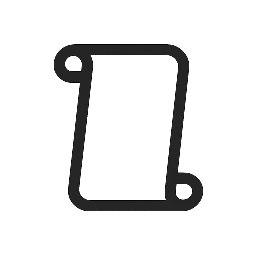
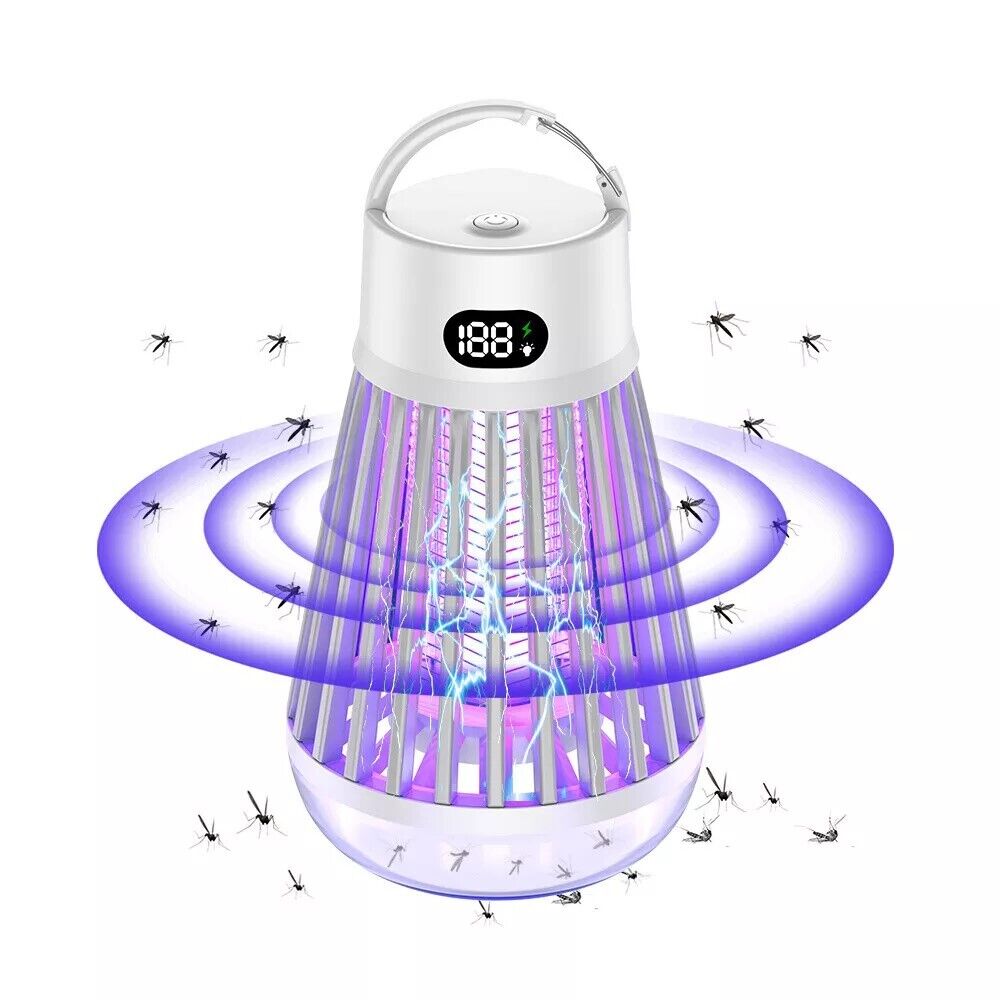
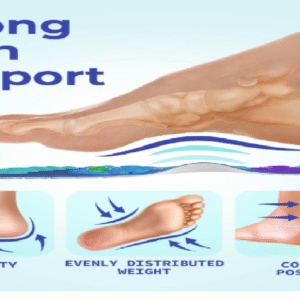
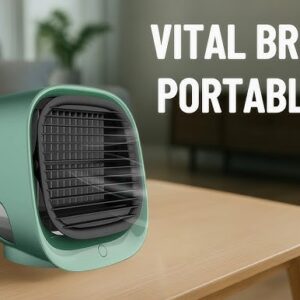
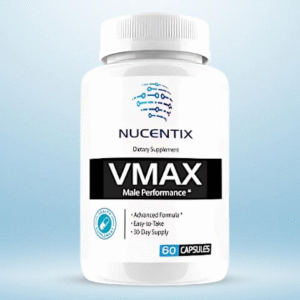
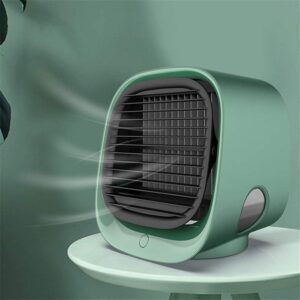

Reviews
There are no reviews yet.